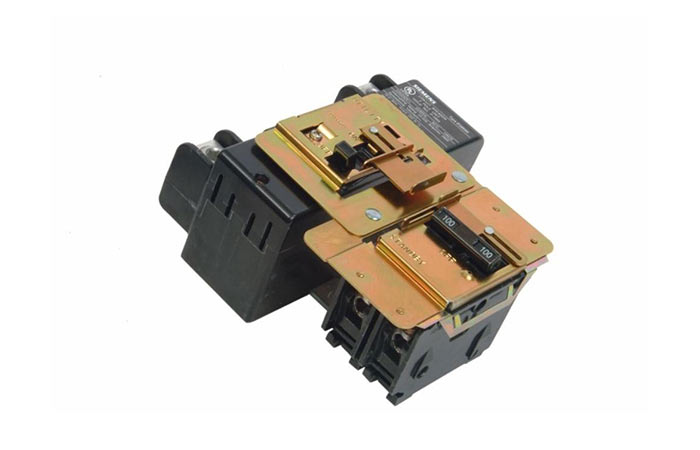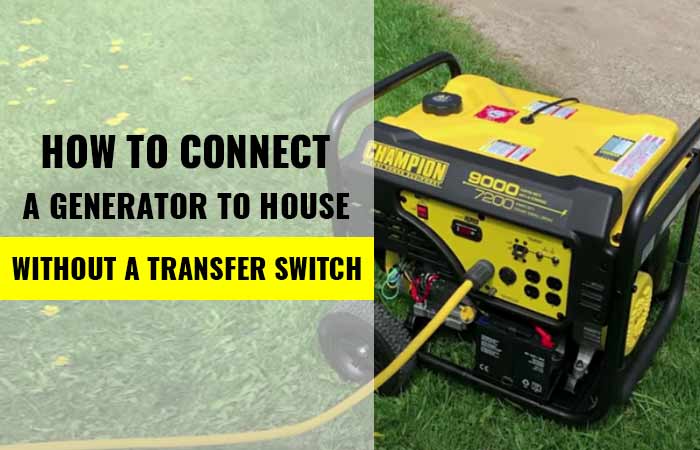The transfer switch of your generator is meant to make the use of the generator much smoother and easier. It does this by isolating the power from your generator from the power from utilities. You thus won’t have the generator affecting your power bills in a negative way.
Besides that, the transfer switch detects any power outages and turns on the generator automatically making it easier to work without power outages. When the power comes back, the same switch will shut down the generator and switches the house back to the grid.
You can, however, use the generator without a transfer switch and this is the focus of this article. You should beware of the fact that a transfer switch is an important part of the generator and using the generator without a switch can be dangerous. For this reason, you need to practice care and focus on the instructions in the following sections.
Why Hook without transfer switch?
While the transfer switch is an important part of the generator as it helps prevent damage to electronic devices, you may have to connect the generator to the house without one in the following cases:
- The transfer switch is faulty.
- The transfer switch is lost.
- The transfer switch is too costly to buy.
Tools Needed
For this to task, you need the following tools:
Interlock Kit
You need an interlock kit that’s made specifically for your type of generator. Before going to purchase one, check on your generator to find the exact model and other specifics. While Interlock switches perform the same task, they rarely work across different types of generators. The good thing is that they don’t cost much.

Wires
You need good strong wires for this task. They should be at least 10 feet long and at 10 gauge. You need three wires (red, black and green).
Breaker
The breaker also needs to be of the same type as your generator to avoid incompatibility issues. The best for this purpose is a two-pole double breaker with 30 amps of power.
Other tools
- Pliers
- Electrical tape
- Screwdriver
- Wrench chisel or huge-bit drill
- Gloves
- Goggles
- Work boots
Besides the breaker, wires and interlock kit, you may already have the rest in your toolbox.
Safety Tips
When carrying out this task, practice the following measures:
- Contact the local government office to check whether it’s legal to connect the generator to the house without a transfer switch in your state.
- Protect yourself by wearing the gear above such as the goggles, gloves and boots.
- Never touch a naked wire when the generator is running.
- Don’t work on electrical appliances in wet conditions.
- Make sure the tools you use are either insulated on the handles or you’re using them with thick gloves made of a non-conductor.
- Avoid using male to male plugs as they will damage the whole system.
- Never use the generator directly connected to a circuit breaker as it’s a high fire risk.
- Turn the main switch off before carrying out any adjustments.
The Procedure
To connect your generator to the house without a transfer switch, you go through the following steps:
- Check the huge round plug of the generator to confirm if it allows dual powering. You can check the codes written on the head of the plug then Google them to check what they mean. If the plug doesn’t allow for dual powering, find one that does.
- Make a pathway for the wires to run from the generator to the house. This can be a hole in the ground or other pathway you find conducive. It should be large enough to accommodate the wires and keep them from being tripped on.
- A short distance from the hole you made for the wires, make space for the power inlet box. This needs to be a space that’s large enough for the inlet box and must be watertight. It should also have good quality glue used to attach it.
- One by one, pull the wires from the conduit body and the wire generator inlet plug. Remove about 0.75 inches of the insulation on the wires the use a screwdriver to tighten them up. For this one, make sure the X and Y goes with the black wire while the common one goes with the white wire. The ground goes with the green wire.
- Prepare the breaker box to receive the wires then push the three wires inside. Make sure you’ve turned off the main breakers and the branch before doing so. The wires should be placed on the upper right spot of the breaker box.
- Install the wires and the breaker retainer then cover the breaker box.
Just like that, you’re done! Keep in mind the fact that an interlock kit is only to be used with a generator when there’s no transfer switch. As always, if you can’t get this job done on your own, call in an expert to do it for you. You’d rather pay a small fee than burn down your house.
Is a Transfer Switch for Generator a must?
Although your generator can run and supply power to the house without a transfer switch, it’s an important part that we recommend for every generator due to the following reasons:
It’s required by the National Electric Code
The National Electric Code requires that a transfer switch is used when using heavy-duty portable generators to supply power to the home. It’s important to keep the house in good condition and also to avoid causing code violations when selling the home.
It’s easy to power the home in emergencies
With a transfer switch, your generator comes on the moment you have a power outage. If you’re dealing with an emergency, you can easily handle it without issues as there will be very little power interruption.
It’s a safe way to connect the generator to the house
While you can use extension wires to connect the generator to the house, you also run the risk of back feed which can electrocute you, damage household appliances and burn the house.
With this guide and risk factors in mind, you can decide on whether to use a transfer switch or not. Lacking one, however, shouldn’t be the reason you don’t use your generator.
More Generator How-tos & Hacks
- Generator Won’t Start (New & Used): Causes, Troubleshooting & Fixes
- Generator Pull Cord Won’t Retract: Causes & Fixes
- How to Start a Generator: New, Used, With/Out Pull Cord
- Generator Won’t Stay Running: Causes & Fixes
- Generator Running Rough & Not Smoothly-Causes + Fixes
- How to Change Oil in Generator-Step by Step
- How to Clean Generator Air Filter & Housing
- How to Fix an Overloaded Generator
- How to make a Generator Quiet as a Cricket for Camping
- 15+ ways to Secure Portable Generators from Theft & Damage
- Portable Generators Safety Tips Checklist
- How to Make Generator Safe for Your Electronics
